Audi e-tron GT vs Kia EV9 – Which one offers the better deal?
Everyday use, family trips or long-distance drives – here’s where the differences show.
Discover whether Audi e-tron GT or Kia EV9 fits your lifestyle better.
Costs and Efficiency:
Price and efficiency are key factors when choosing a car – and this is often where the real differences emerge.
Kia EV9 has a decisively advantage in terms of price – it starts at 53100 £, while the Audi e-tron GT costs 93300 £. That’s a price difference of around 40208 £.
In terms of energy consumption, the advantage goes to the Audi e-tron GT: with 17.90 kWh per 100 km, it’s minimal more efficient than the Kia EV9 with 19.50 kWh. That’s a difference of about 1.60 kWh.
As for range, the Audi e-tron GT performs hardly perceptible better – achieving up to 617 km, about 54 km more than the Kia EV9.
Engine and Performance:
Power, torque and acceleration say a lot about how a car feels on the road. This is where you see which model delivers more driving dynamics.
When it comes to engine power, the Audi e-tron GT has a evident edge – offering 843 HP compared to 508 HP. That’s roughly 335 HP more horsepower.
In acceleration from 0 to 100 km/h, the Audi e-tron GT is convincingly quicker – completing the sprint in 2.90 s, while the Kia EV9 takes 4.60 s. That’s about 1.70 s faster.
In terms of top speed, the Audi e-tron GT performs to a small extent better – reaching 250 km/h, while the Kia EV9 tops out at 220 km/h. The difference is around 30 km/h.
There’s also a difference in torque: Audi e-tron GT pulls evident stronger with 1027 Nm compared to 740 Nm. That’s about 287 Nm difference.
Space and Everyday Use:
Beyond pure performance, interior space and usability matter most in daily life. This is where you see which car is more practical and versatile.
Seats: Kia EV9 offers convincingly more seating capacity – 7 vs 4.
In curb weight, Audi e-tron GT is hardly perceptible lighter – 2355 kg compared to 2392 kg. The difference is around 37 kg.
In terms of boot space, the Audi e-tron GT offers to a small extent more room – 405 L compared to 333 L. That’s a difference of about 72 L.
When it comes to payload, Kia EV9 distinct takes the win – 615 kg compared to 485 kg. That’s a difference of about 130 kg.
Who comes out on top?
Overall, the Audi e-tron GT shows itself to be leaves the rival little chance and secures the title of DriveDuel Champion.
It convinces with the more balanced overall package and proves to be the more versatile choice for everyday use.
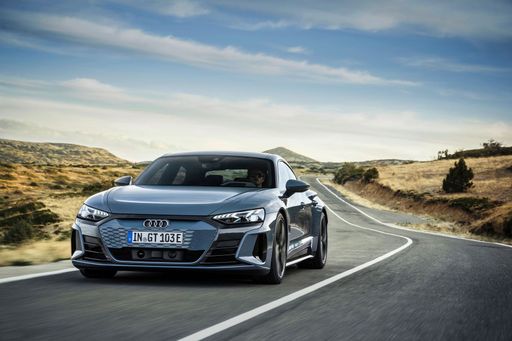
Audi e-tron GT
Audi e-tron GT
The Audi e-tron GT showcases a harmonious blend of luxurious design and electrifying performance, making it a standout in the realm of electric vehicles. Its sleek, aerodynamic contours are not just for show; they contribute to a driving experience that's as smooth as it is exhilarating. Inside, the cabin exudes an air of sophistication, offering cutting-edge technology and premium materials that speak to Audi's commitment to quality and innovation.
details @ audi-mediacenter.com
@ audi-mediacenter.com
 @ audi-mediacenter.com
@ audi-mediacenter.com
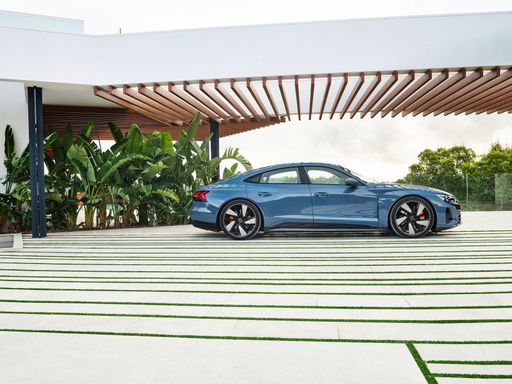 @ audi-mediacenter.com
@ audi-mediacenter.com
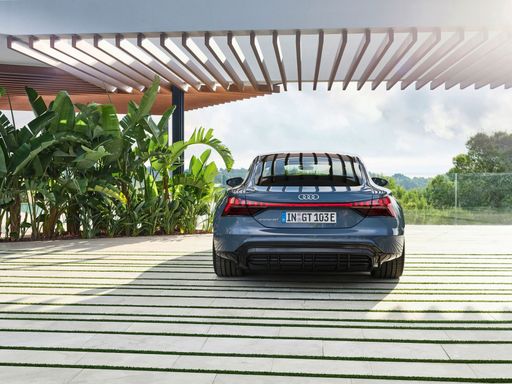 @ audi-mediacenter.com
@ audi-mediacenter.com
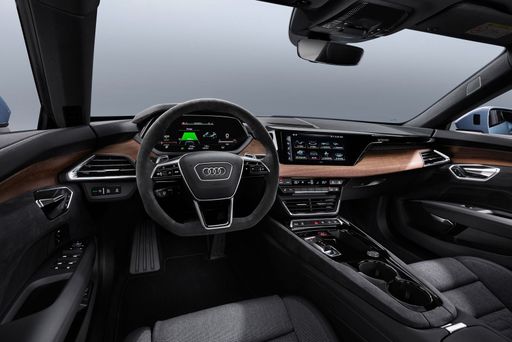 @ audi-mediacenter.com
@ audi-mediacenter.com
 @ audi-mediacenter.com
@ audi-mediacenter.com
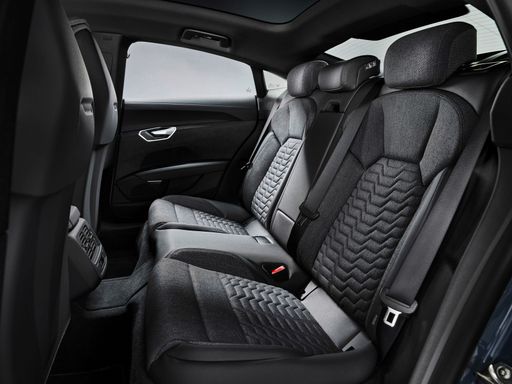 @ audi-mediacenter.com
@ audi-mediacenter.com
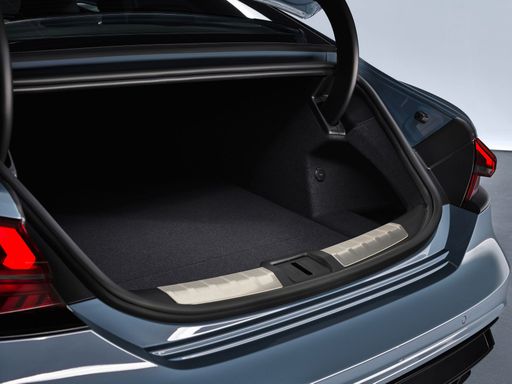 @ audi-mediacenter.com
@ audi-mediacenter.com
Kia EV9
The Kia EV9 represents a bold step forward in the automotive world with its distinctive design and futuristic appeal. This all-electric SUV promises to provide a spacious and comfortable cabin experience, making it ideal for families and long journeys. With its emphasis on sustainability and advanced technology, the EV9 aims to redefine the standards for electric vehicles in its category.
details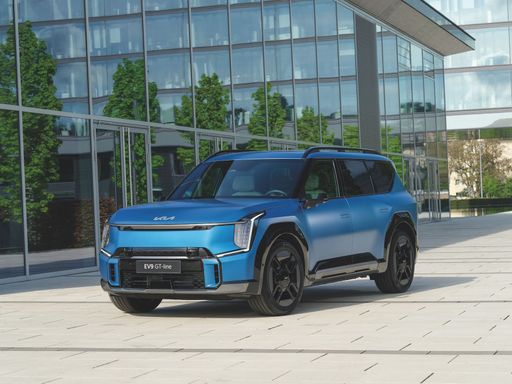 @ press.kia.com
@ press.kia.com
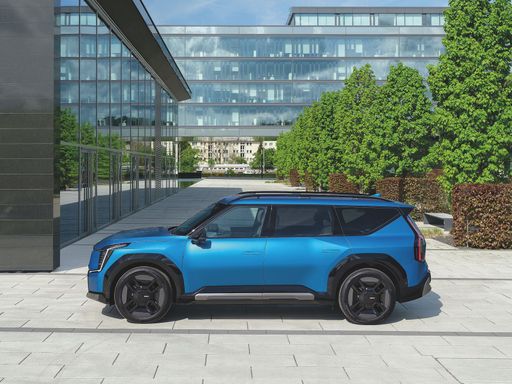 @ press.kia.com
@ press.kia.com
 @ press.kia.com
@ press.kia.com
 @ press.kia.com
@ press.kia.com
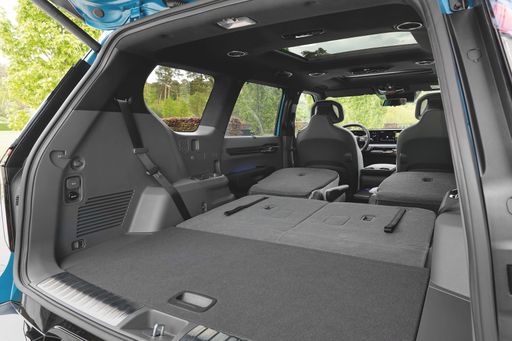 @ press.kia.com
@ press.kia.com

|

|
|
|
|
Costs and Consumption |
|
|---|---|
|
Price
93300 - 137600 £
|
Price
53100 - 78000 £
|
|
Consumption L/100km
-
|
Consumption L/100km
-
|
|
Consumption kWh/100km
17.9 - 19 kWh
|
Consumption kWh/100km
19.5 - 22.8 kWh
|
|
Electric Range
582 - 617 km
|
Electric Range
443 - 563 km
|
|
Battery Capacity
97 kWh
|
Battery Capacity
76.1 - 99.8 kWh
|
|
co2
0 g/km
|
co2
0 g/km
|
|
Fuel tank capacity
-
|
Fuel tank capacity
-
|
Dimensions and Body |
|
|---|---|
|
Body Type
Coupe
|
Body Type
SUV
|
|
Seats
4
|
Seats
6 - 7
|
|
Doors
4
|
Doors
5
|
|
Curb weight
2355 - 2395 kg
|
Curb weight
2392 - 2664 kg
|
|
Trunk capacity
350 - 405 L
|
Trunk capacity
333 L
|
|
Length
4997 - 5004 mm
|
Length
5010 - 5015 mm
|
|
Width
1964 mm
|
Width
1980 mm
|
|
Height
1379 - 1394 mm
|
Height
1755 - 1780 mm
|
|
Max trunk capacity
-
|
Max trunk capacity
2318 - 2393 L
|
|
Payload
455 - 485 kg
|
Payload
542 - 615 kg
|
Engine and Performance |
|
|---|---|
|
Engine Type
Electric
|
Engine Type
Electric
|
|
Transmission
Automatic
|
Transmission
Automatic
|
|
Transmission Detail
Reduction Gearbox
|
Transmission Detail
Reduction Gearbox
|
|
Drive Type
All-Wheel Drive
|
Drive Type
All-Wheel Drive, Rear-Wheel Drive
|
|
Power HP
592 - 843 HP
|
Power HP
204 - 508 HP
|
|
Acceleration 0-100km/h
2.9 - 4 s
|
Acceleration 0-100km/h
4.6 - 9.4 s
|
|
Max Speed
245 - 250 km/h
|
Max Speed
185 - 220 km/h
|
|
Torque
625 - 1027 Nm
|
Torque
350 - 740 Nm
|
|
Number of Cylinders
-
|
Number of Cylinders
-
|
|
Power kW
430 - 620 kW
|
Power kW
150 - 374 kW
|
|
Engine capacity
-
|
Engine capacity
-
|
General |
|
|---|---|
|
Model Year
2024 - 2025
|
Model Year
2023 - 2025
|
|
CO2 Efficiency Class
A
|
CO2 Efficiency Class
A
|
|
Brand
Audi
|
Brand
Kia
|
Is the Audi e-tron GT offered with different drivetrains?
Available configurations include All-Wheel Drive.
The prices and data displayed are estimates based on German list prices and may vary by country. This information is not legally binding.
